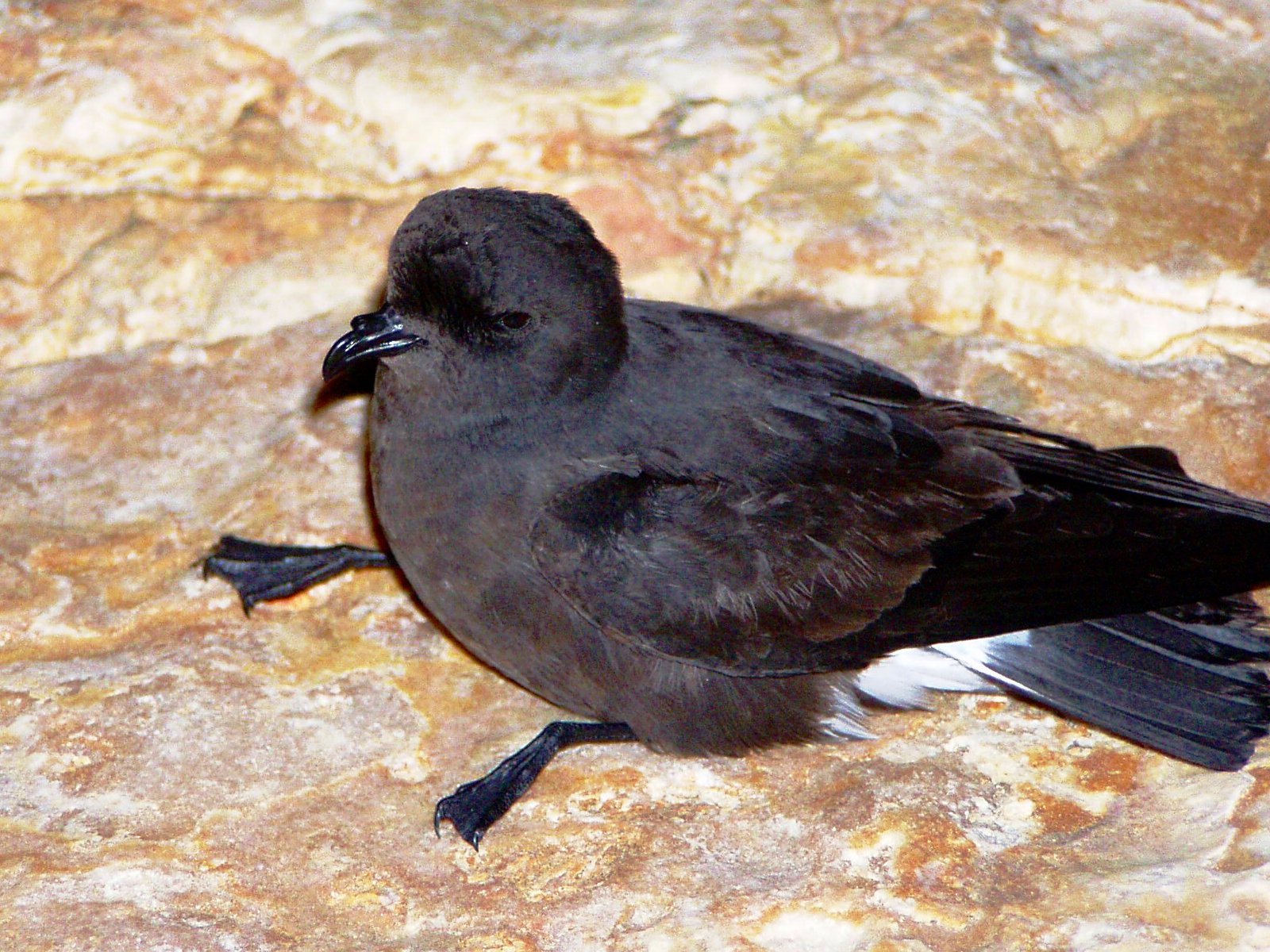- European Storm-petrel
Taxobox
name = European Storm-petrel
status = LC | status_system = IUCN3.1

regnum =Animal ia
phylum = Chordata
classis = Aves
ordo =Procellariiformes
familia =Hydrobatidae
genus = "Hydrobates"
genus_authority = Boie, 1822
species = "H. pelagicus"
binomial = "Hydrobates pelagicus"
binomial_authority = (Linnaeus, 1758)The European Storm-petrel or Storm Petrel ("Hydrobates pelagicus") is a small
bird of thestorm-petrel family, Hydrobatidae, part of theseabird orderProcellariiformes . It is the only member of the genus "Hydrobates".It breeds on inaccessible islands in the north Atlantic and western
Mediterranean , with the core population in westernIreland , northwestScotland and theFaroe Islands , where the worldwide biggest colony breeds on the island ofNólsoy . It nests in colonies close to the sea in burrows or rock crevices. It lays a single white egg.It is strictly nocturnal at the breeding sites to avoid predation by
gull s andskua s, and will even avoid coming to land on clear moonlit nights. Like most petrels, its walking ability is limited to a short shuffle to the burrow.The Storm Petrel is a small
bird , only the size of aHouse Martin , which it superficially resembles with its darkplumage and white rump. It is 15-16 cm in length with a 38-42 cm wingspan. It has a fluttering flight, and patters on the water surface as it picksplankton ic food items from the ocean surface.It can be distinguished from
Leach's Storm-petrel andWilson's Storm-petrel by its smaller size, different rump pattern and flight behaviour. It is strictly pelagic outside the breeding season, and this, together with its remote breeding sites, makes Storm Petrel a difficult bird to see from land. Only in Atlantic storms might this species be pushed into the headlands of south-westernIreland andEngland .This species is, however, readily seen from ships, which it will follow. It is attracted by "chum" (a mixture of fish offal, fish oil,
popcorn and sometimesdimethyl sulfide ) used by birders to lure seabirds, and an apparently empty ocean will soon fill with hundreds of these birds.Folklore
It is familiar to sailors, and much folklore is associated with this harbinger of stormy weather. Its most common folk name is "Mother Carey's Chicken",cite book |last=Cooper |first=JC |title=Symbolic and Mythological Animals |pages=p. 218 |year=1992 |publisher= Aquarian Press |location=London |isbn=1-85538-118-4] perhaps derived from "Mother Mary".
References
* Database entry includes a lengthy justification of why this species is of least concern
External Links
* [http://www.bsc-eoc.org/avibase/species.jsp?lang=EN&id=6D7349CB48DFF725&ts=1220192105005&sec=summary Avibase]
Wikimedia Foundation. 2010.
